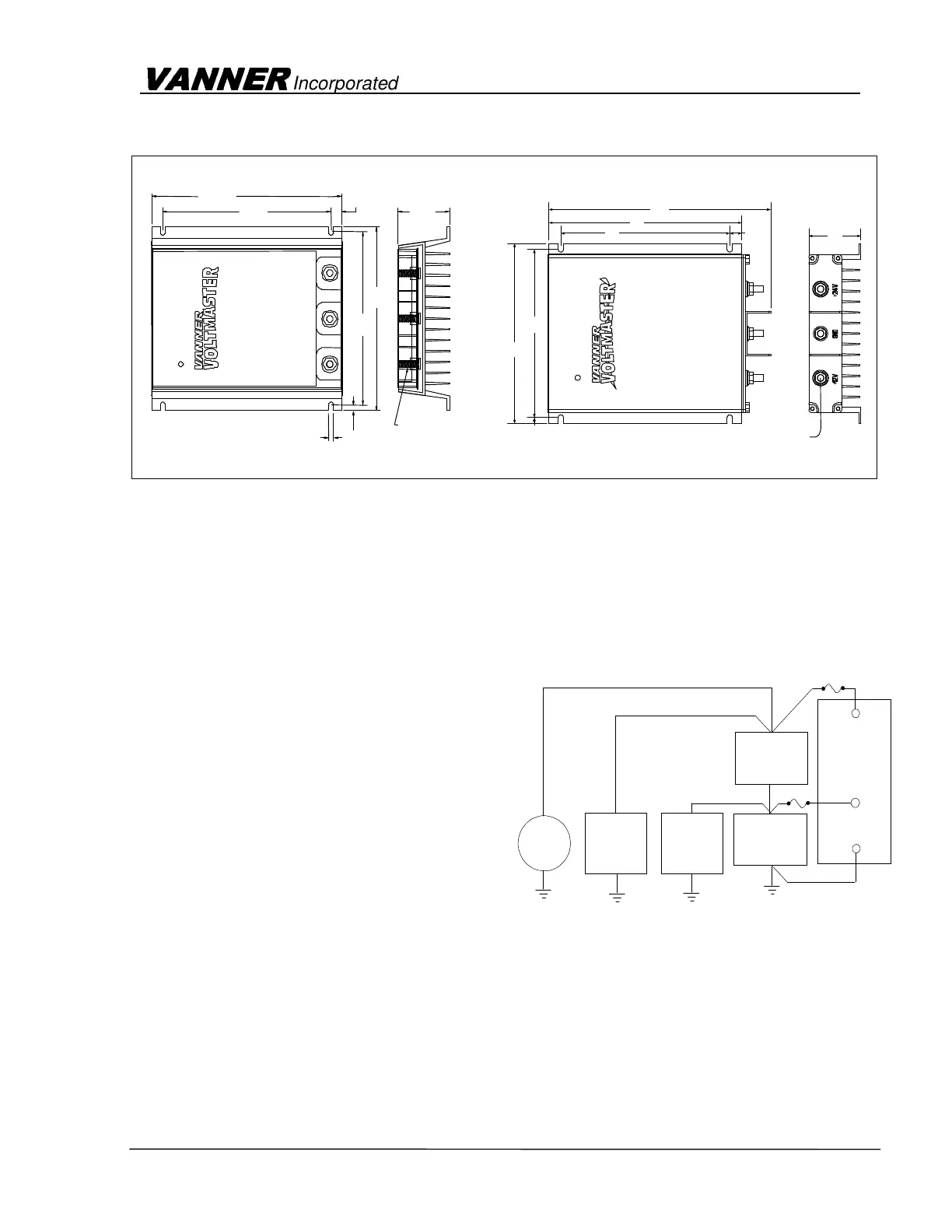___________________________________________________________________
Theory of Operation
In many 24 volt electrical systems it is desirable to tap into the battery system to obtain power for 12 volt
loads. This method, while seemingly simple, causes a charge imbalance resulting in Battery B (see
diagram) being overcharged, and possibly boiling, while Battery A discharges.
To solve this application problem the Vanner
VoltMaster Battery Equalizer is connected to the
battery system at the +24 volt, +12 volt, and
ground points. The Battery Equalizer makes the
batteries look like they are in series and in
parallel at the same time. The Battery Equalizer
maintains the voltage balance and therefore the
charge acceptance rate of each battery. Family
3 and Family 4 Equalizers hold Battery A and B
voltages to within 0.05 volts under light loads
and to within 0.1 volts at full rated load. Family 1
and Family 2 models hold Battery A and B
voltages to within 0.10 volts under light loads
and to within 0.50 volts under full rated load.
When the voltage of Battery A is higher than or
equal to Battery B the Battery Equalizer is in the
standby mode, i.e., it is not transferring power from its 24 volt input to its 12 volt output. When a 12 volt
load is present, and Battery A' s voltage decreases to just below the voltage of Battery B, the Battery
Equalizer activates and transfers sufficient current from Battery B to Battery A to satisfy the load and
maintain an equal voltage and charge in both batteries.
A key advantage of a system containing a Vanner VoltMaster Battery Equalizer, compared to a DC to DC
converter, is that if the 12 volt load requires a momentary surge current which exceeds the rated capacity

